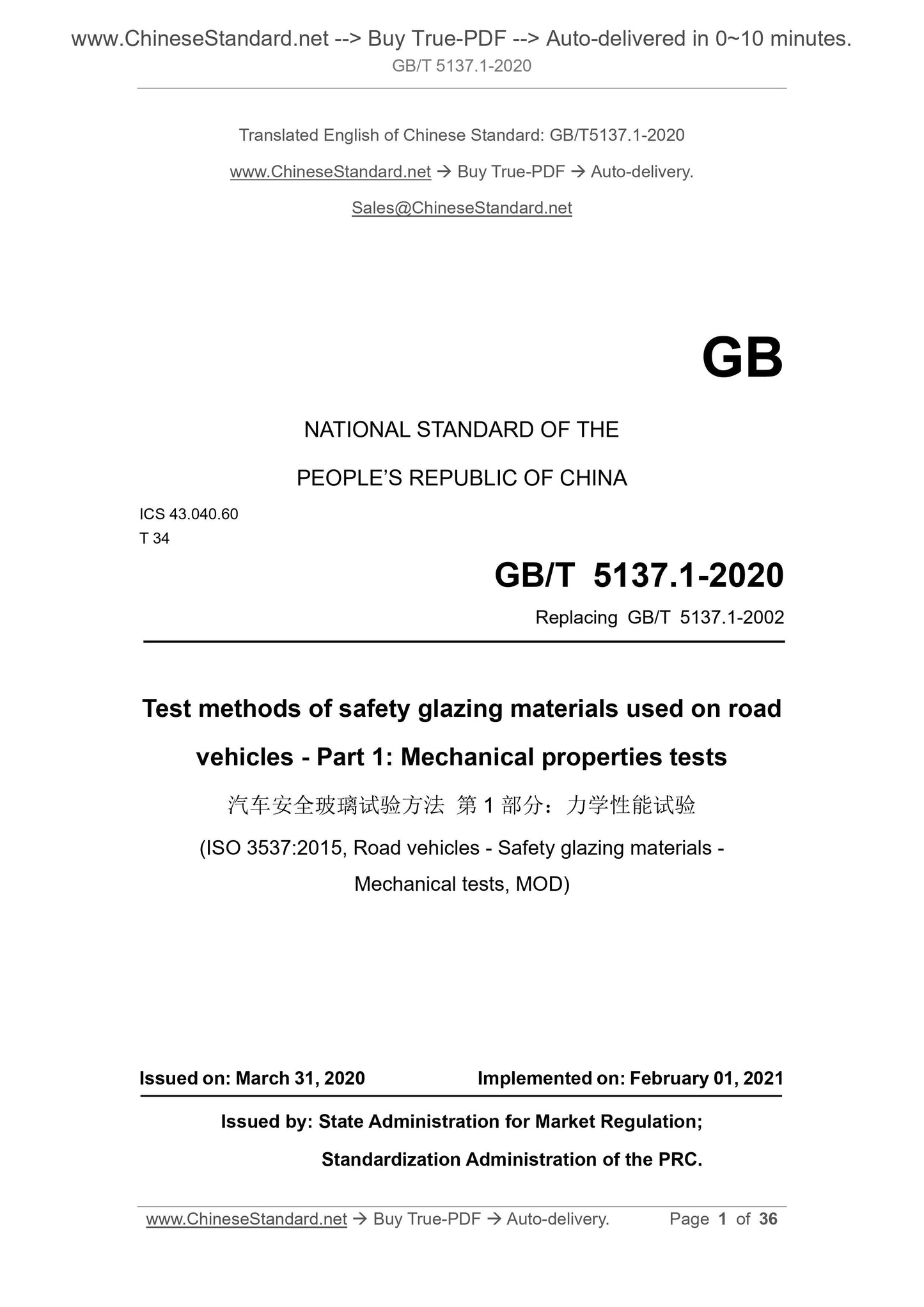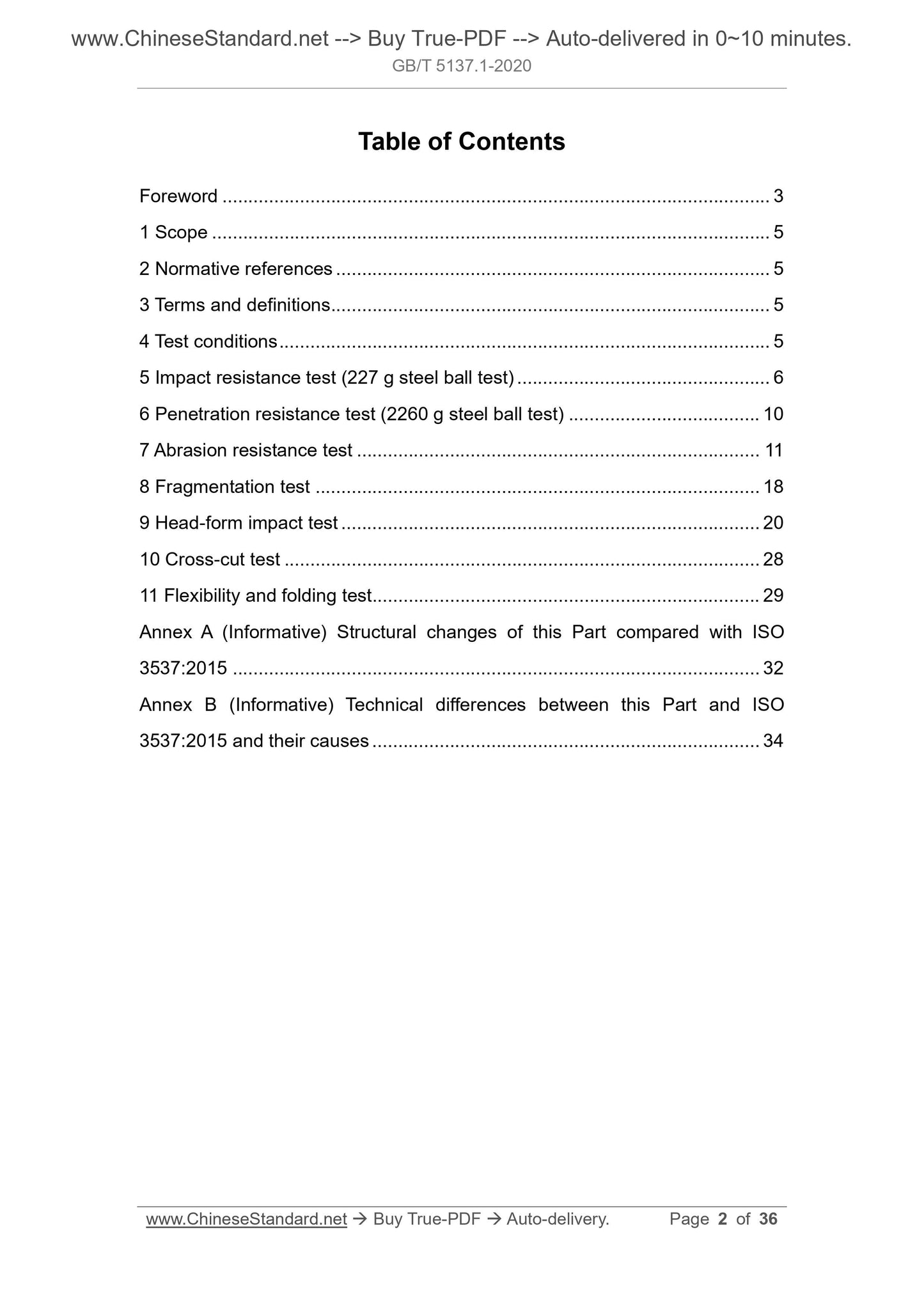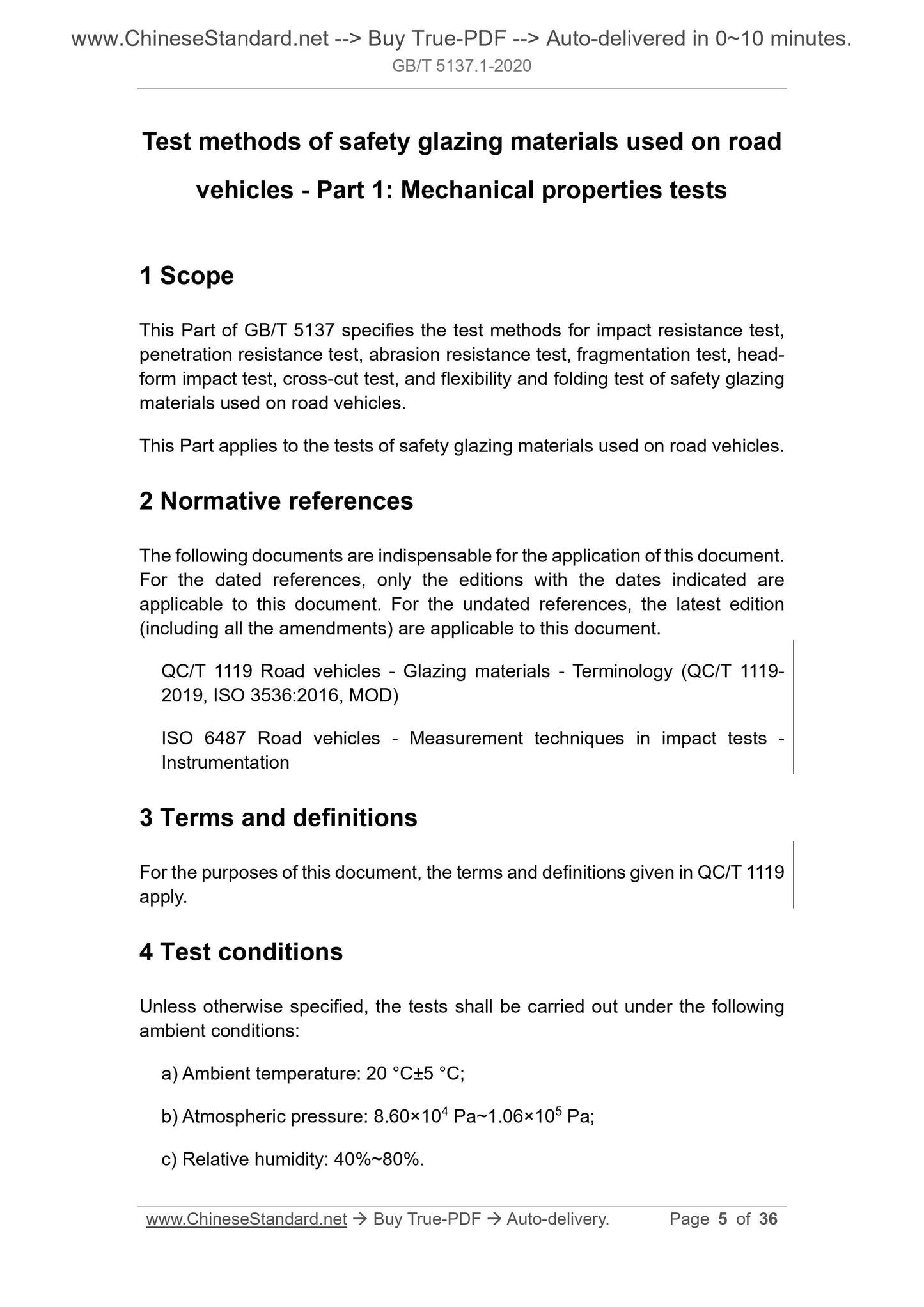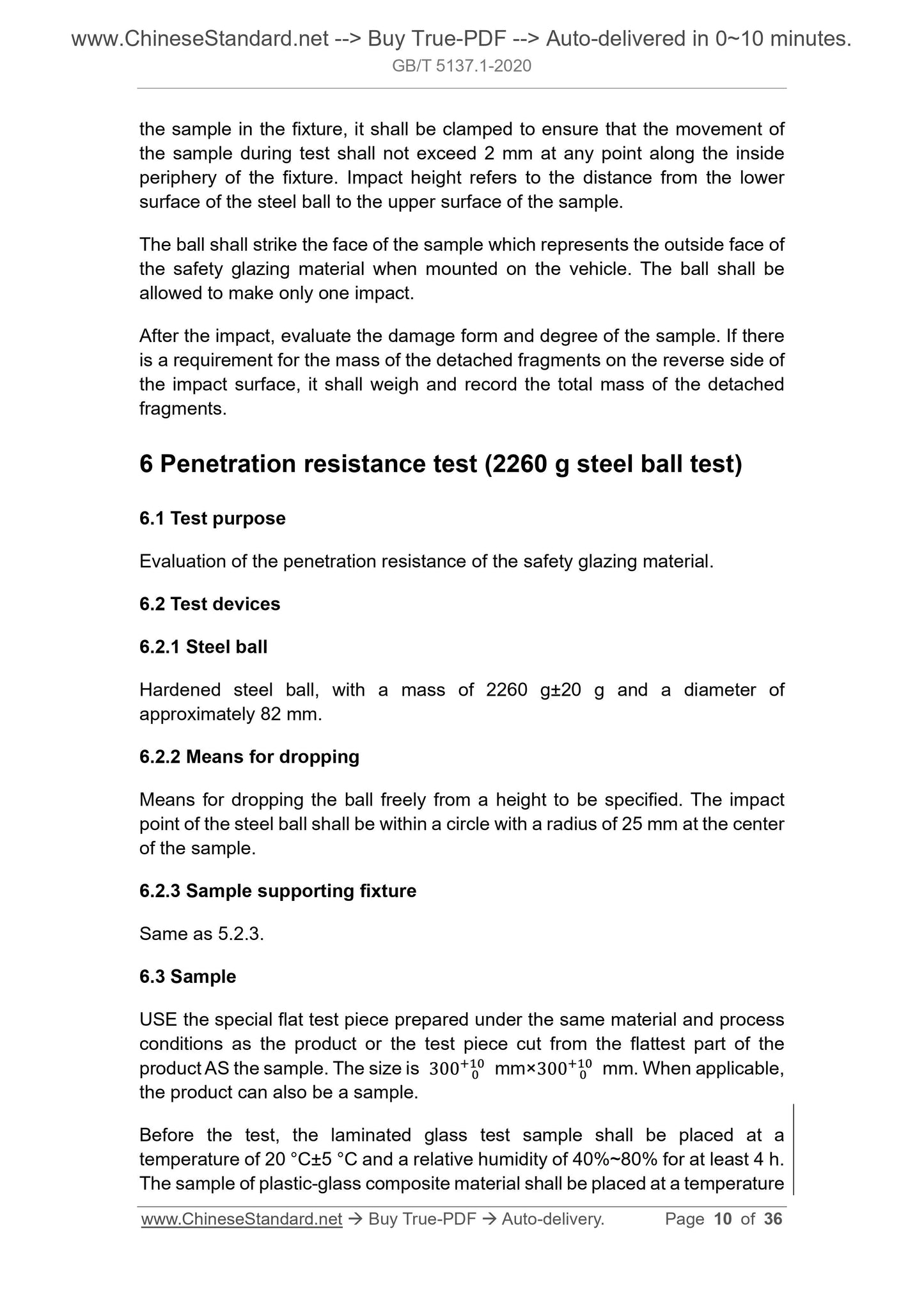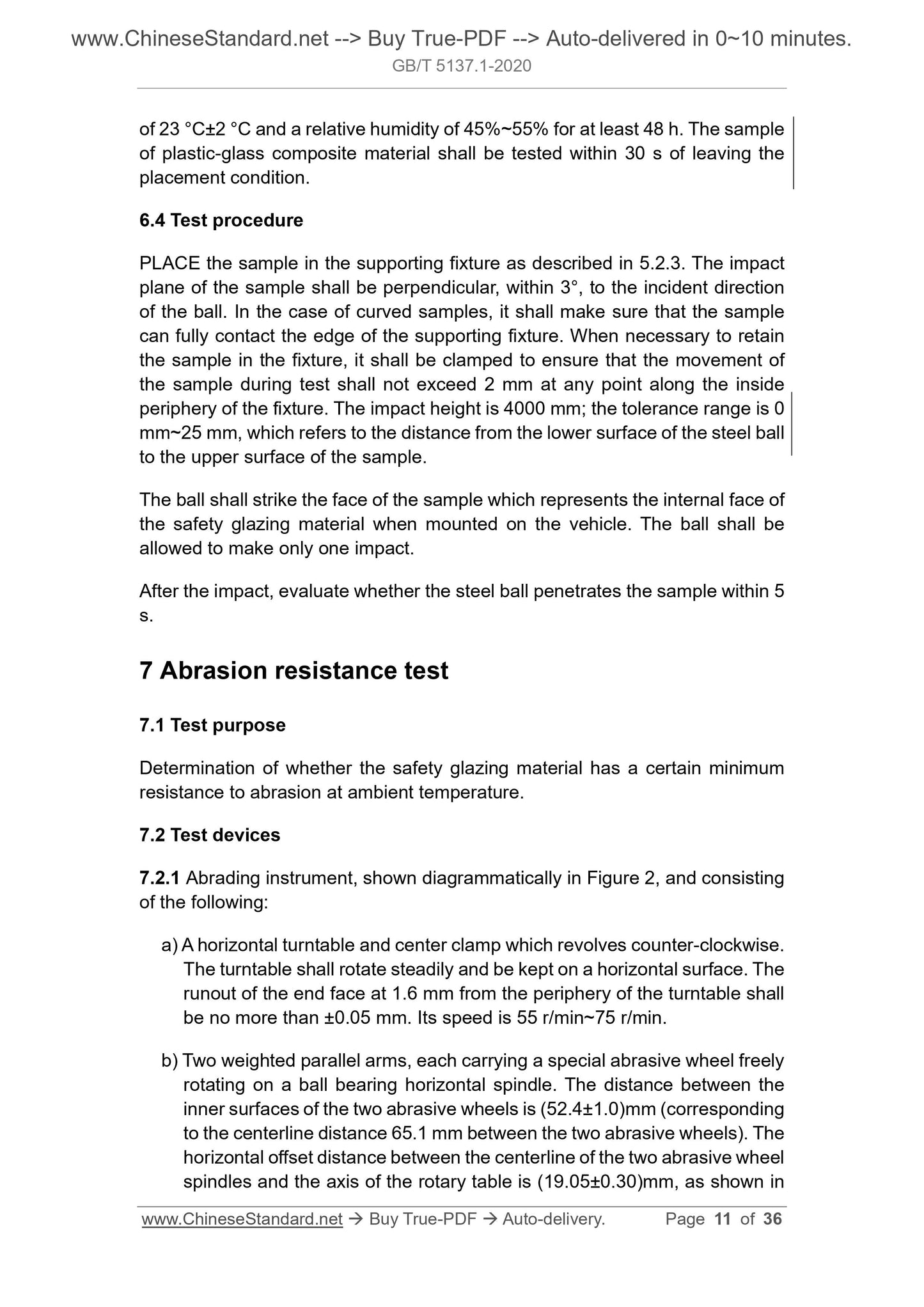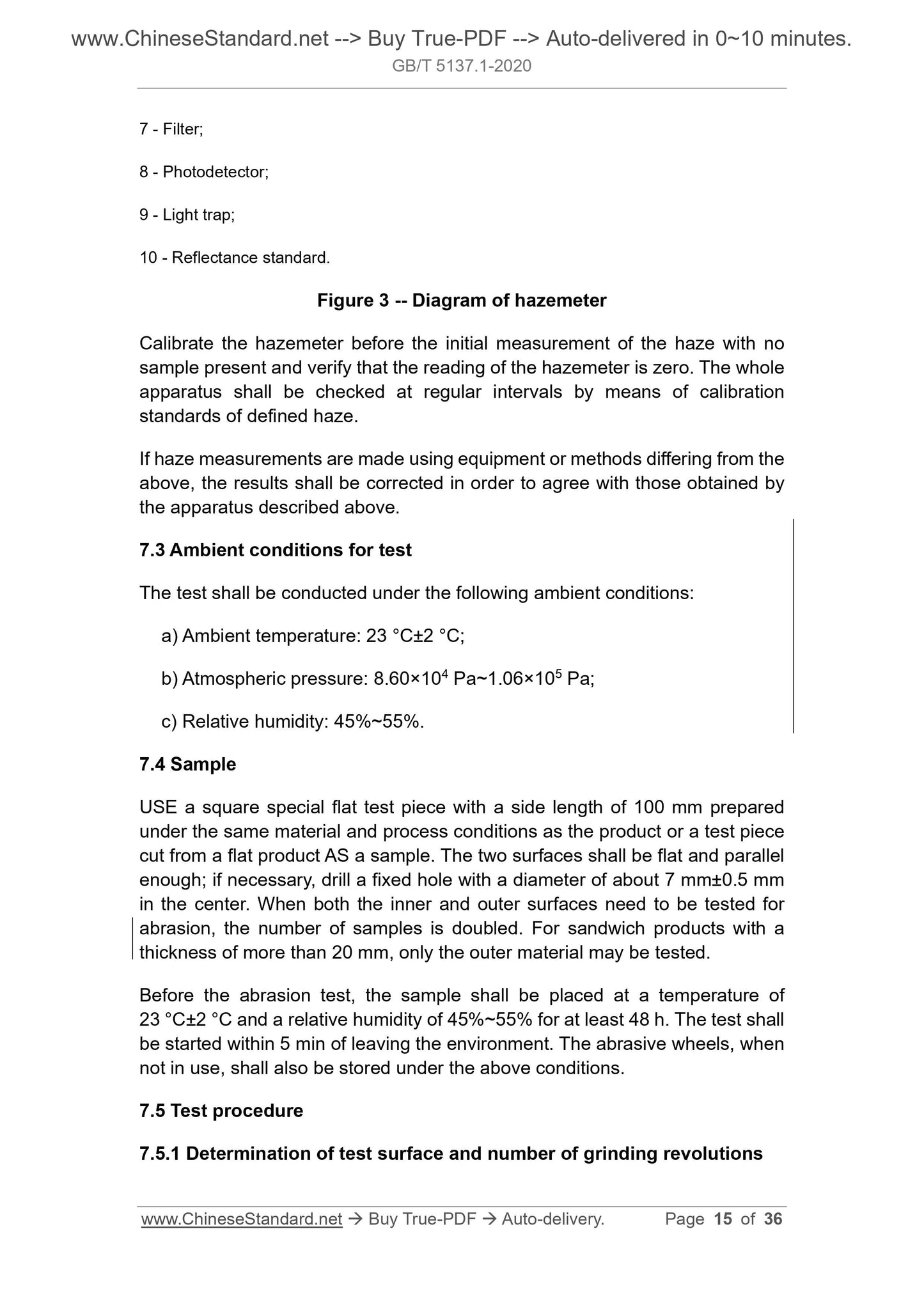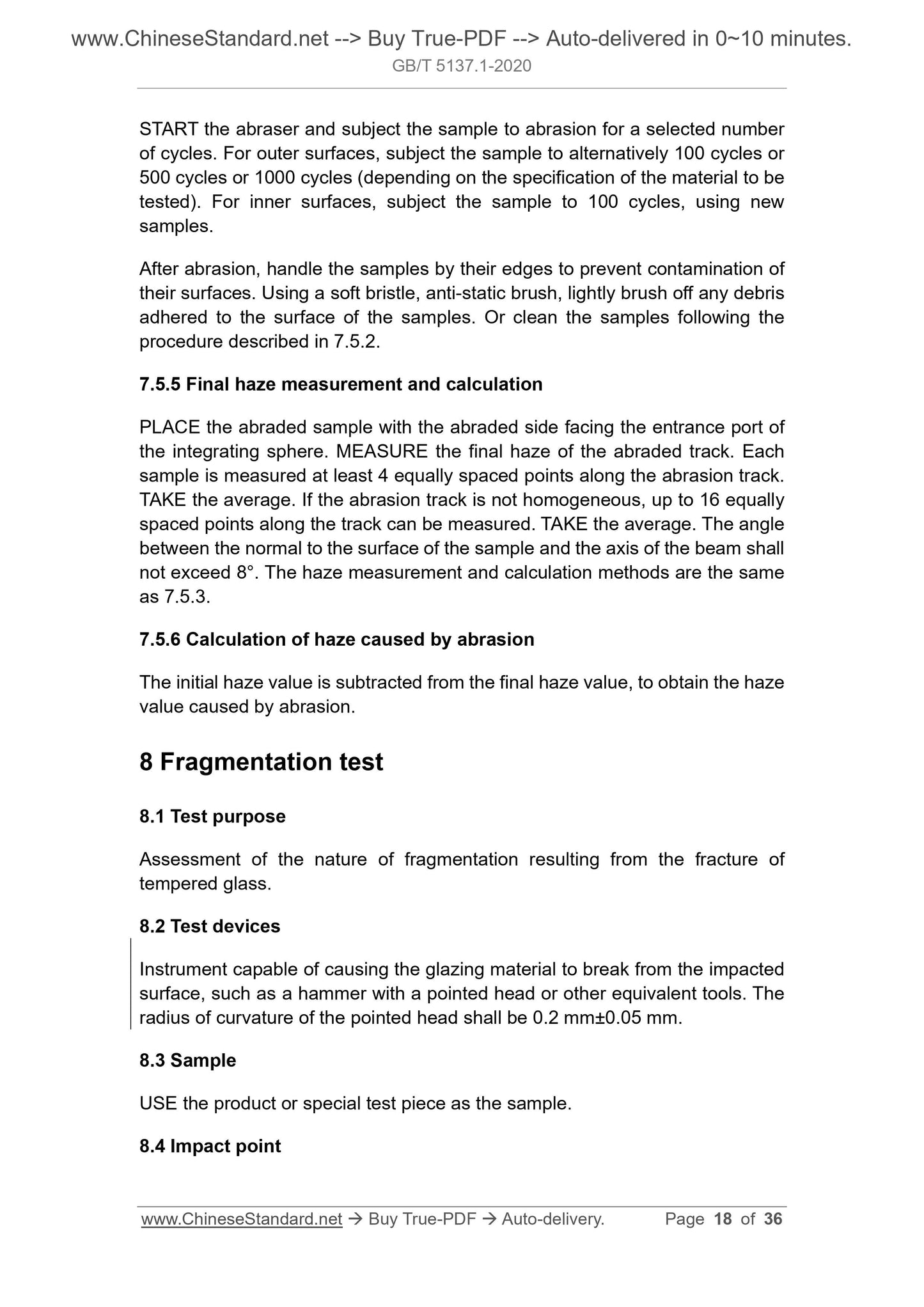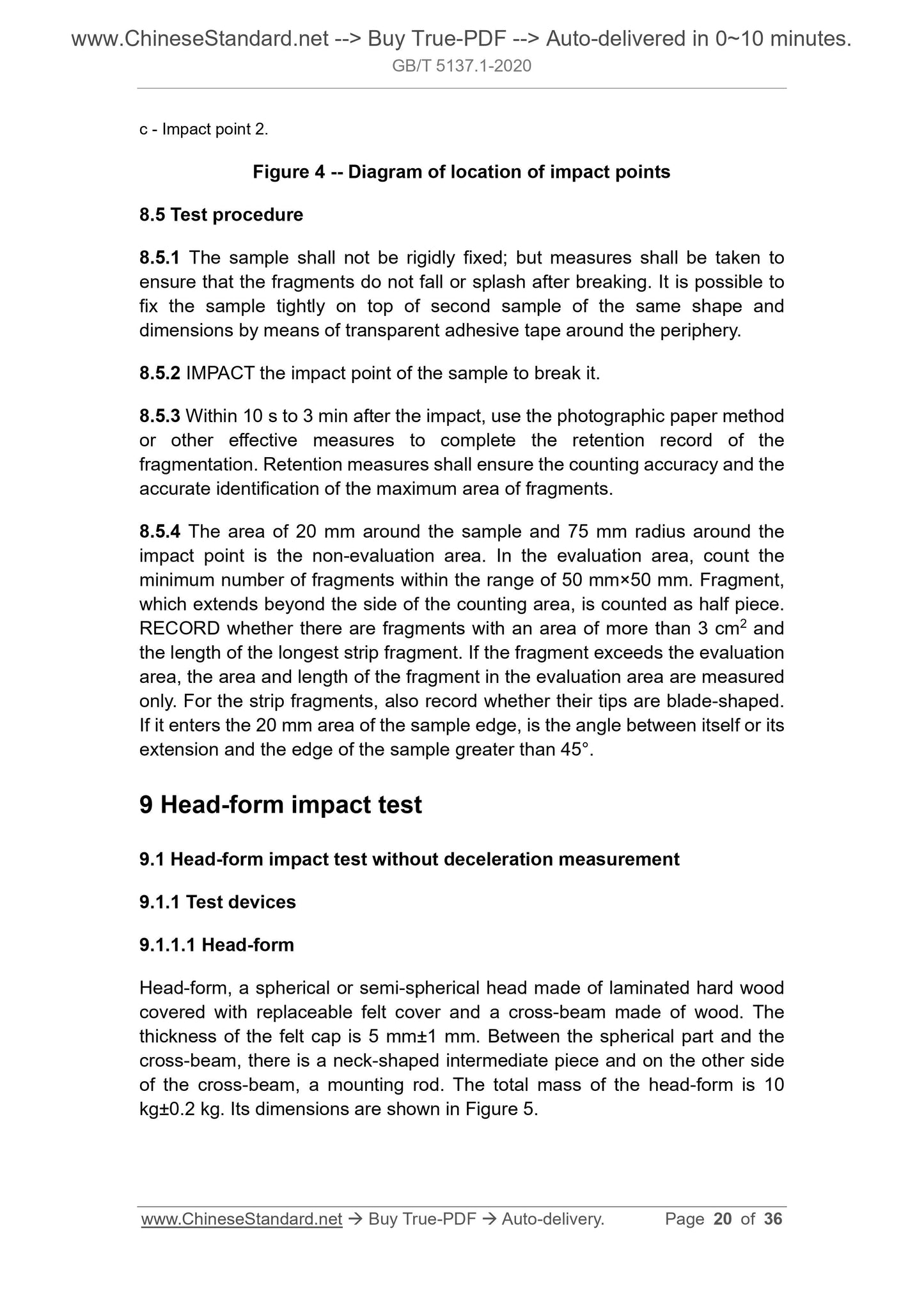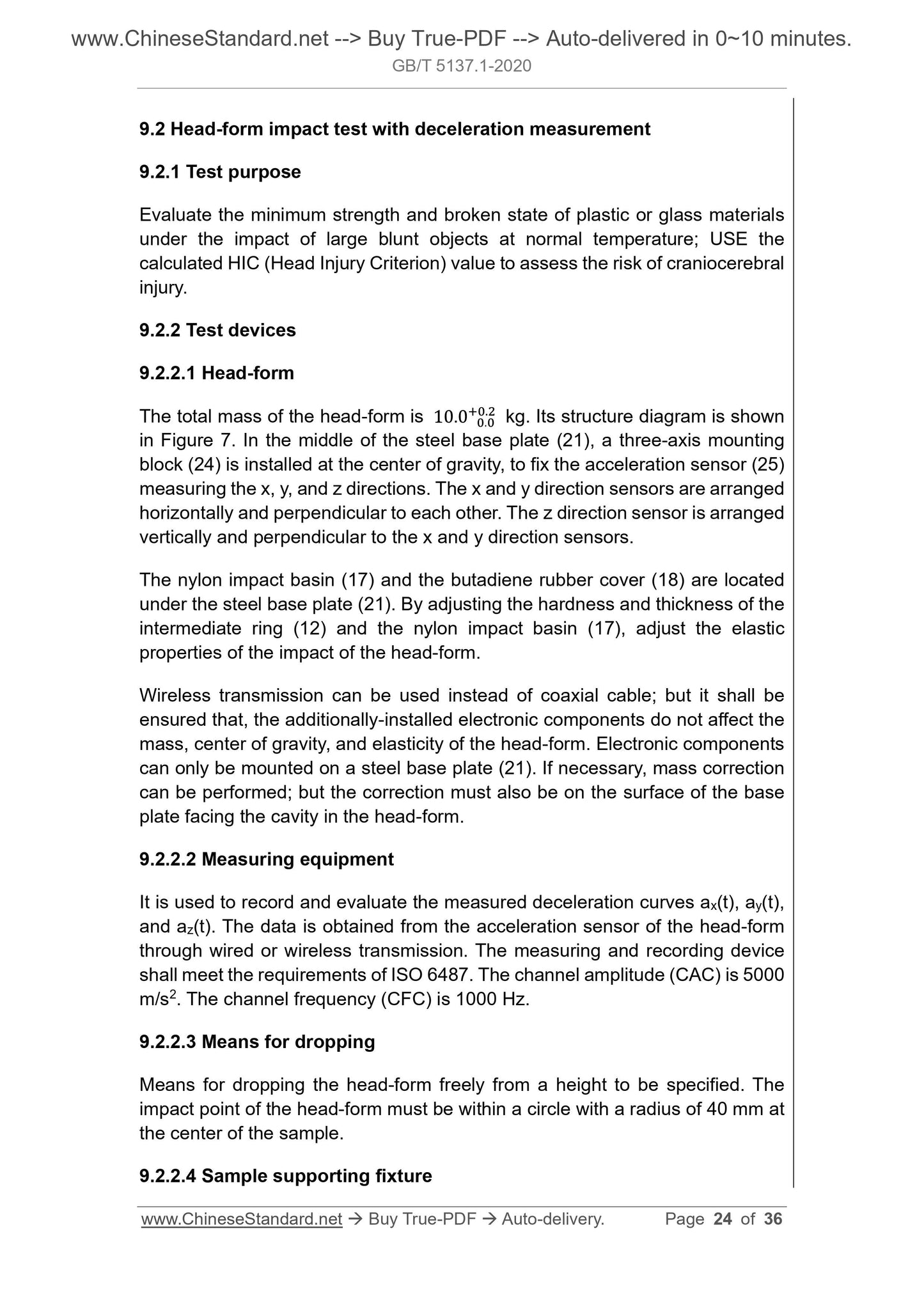1
/
of
9
www.ChineseStandard.us -- Field Test Asia Pte. Ltd.
GB/T 5137.1-2020 English PDF (GB/T5137.1-2020)
GB/T 5137.1-2020 English PDF (GB/T5137.1-2020)
Regular price
$355.00
Regular price
Sale price
$355.00
Unit price
/
per
Shipping calculated at checkout.
Couldn't load pickup availability
GB/T 5137.1-2020: Test methods of safety glazing materials used on road vehicles - Part 1: Mechanical properties tests
Delivery: 9 seconds. Download (and Email) true-PDF + Invoice.Get Quotation: Click GB/T 5137.1-2020 (Self-service in 1-minute)
Newer / historical versions: GB/T 5137.1-2020
Preview True-PDF
Scope
This Part of GB/T 5137 specifies the test methods for impact resistance test,penetration resistance test, abrasion resistance test, fragmentation test, head-
form impact test, cross-cut test, and flexibility and folding test of safety glazing
materials used on road vehicles.
Basic Data
| Standard ID | GB/T 5137.1-2020 (GB/T5137.1-2020) |
| Description (Translated English) | Test methods of safety glazing materials used on road vehicles - Part 1: Mechanical properties tests |
| Sector / Industry | National Standard (Recommended) |
| Classification of Chinese Standard | T34 |
| Classification of International Standard | 43.040.60 |
| Word Count Estimation | 26,251 |
| Date of Issue | 2020-03-31 |
| Date of Implementation | 2021-02-01 |
| Issuing agency(ies) | State Administration for Market Regulation, China National Standardization Administration |
Share
